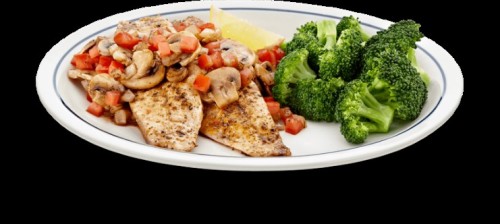by Jim Johnson, Insyte Consultant
As a manufacturing consultant I, at times, use analogies to try and get a point across as I am training or having a conversation with leadership and shop floor employees. One of the analogies I use is comparing manufacturers to restaurants. After a get a quizzical look, I explain my comparison.
- Know who you are.
For the sake of discussion, let’s put restaurants into three familiar categories:
- Fast Food
- Family
- Five Star
Each of these cater to a different clientele, and the customers’ expectations of the restaurants level of service, food quality, price, ambiance and wait times are known.
The perceived quality of a hamburger is different at McDonald’s than Appleby’s or Smith & Wollensky’s. But, if I’m at a McDonald’s in different cities, the taste should be the same; maybe not the best, but predictable and consistent.
It’s your reputation as a manufacturer in the marketplace.
- Are you a high quality “partner” with your customers and /or suppliers, do they depend on you for your expertise, knowledge, guidance?
- Are you a reliable job shop that makes sure your customer’s desires are known, understood and met?
- Are you a high volume manufacturer?
Once you know who you are, and how you are perceived in the market, you can then staff and focus on those things to cement your reputation.
Don’t try to be someone who you are not. Know why your customers come to you.
- Be Flexible
You don’t know what the customer will be ordering but it is probably something that is on the menu; or in your catalogue or a service on your website.
You must be set up to supply the desires of the customer, and in the expectations of your reputation. (Quality, delivery, service, etc.)
In a drive through, the restaurant doesn’t know what will be ordered; but they need to have the kitchen stocked, staffed and organized to meet the order in the expected time and level of quality.
- Customer Service is important, regardless of the type of restaurant.
You as a manufacturer must meet or exceed the quality expectations that your reputation has.
In a restaurant setting, the customer service reputation is defined by the interaction between the customer and the order taker / server.
Same in manufacturing. The person taking the order, or communicating with the customer is the manufacturer’s conduit and first impression.
The customer could care less what goes on behind the scenes in the kitchen, they just want their order to meet their expectations; if it does, the server is rewarded or complimented, if it doesn’t the server is the one taking the blame and has to resolve the issue.
- The kitchen is your production floor.
This is where you turn the order into what the customer is expecting.
Make sure you know what and when the customer wants, the first time (“You want fries with that?”). Those times where the order was miscommunicated and it gets to the customer and it’s not correct, leaves a lasting bad impression. Those times where the wait staff has to return to insure that they have all specifications (“What type of salad dressing do you want?”), can delay the time the order is complete.
Communicate those specifications clearly to the kitchen. No rework. Set the order prioritization.
Organize the kitchen so that all the raw material, equipment and manpower is available.
Schedule the equipment and resources to meet the priorities.
Manufacture (cook) to the specifications and test if need be.
Ship (present) the completed order to the customer.
Receive payment.
Restaurants make more of a profit by getting more customers through in the same amount of time; in drive thus or turning over the tables (getting one out, cleaning and changing over to a new setting). Throughput is important to profitability.
- Get Feedback
How was the meal? Will you return?
Everyone has most likely been to a restaurant where the owner, maître d, hostess, etc. has come to ask how things were. How does that make you feel?
Immediate feedback on how you did is important. The customer feels as though their opinion matters (it should); and the manufacturer (restaurant) can learn from both the good and bad.
So, the next time you are at a restaurant; think about the system in place and all that goes into getting the food to you in the manner that you wanted and how all those tasks need to interact for a satisfactory meal; and relate it to your manufacturing system. How can it be better to satisfy your customer?

